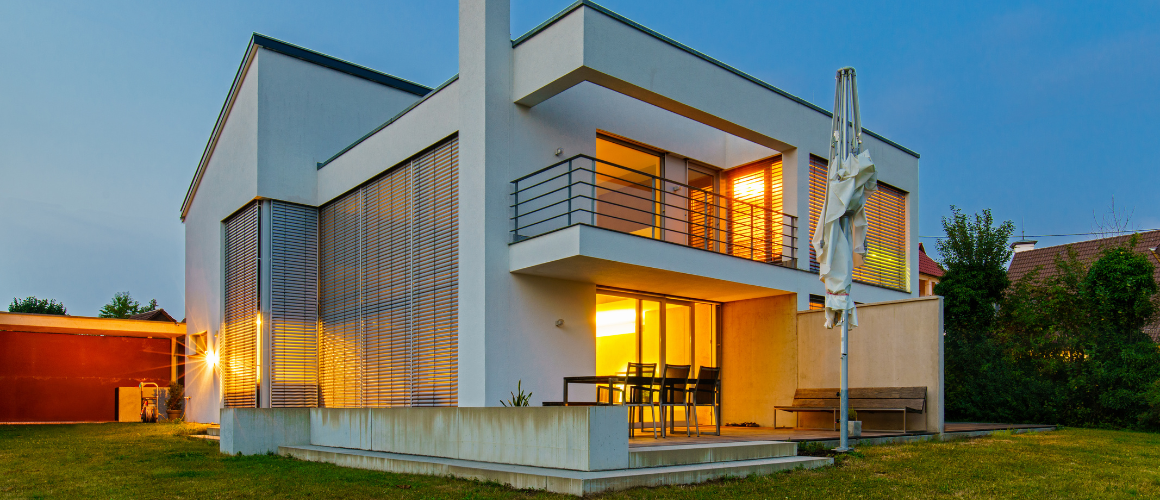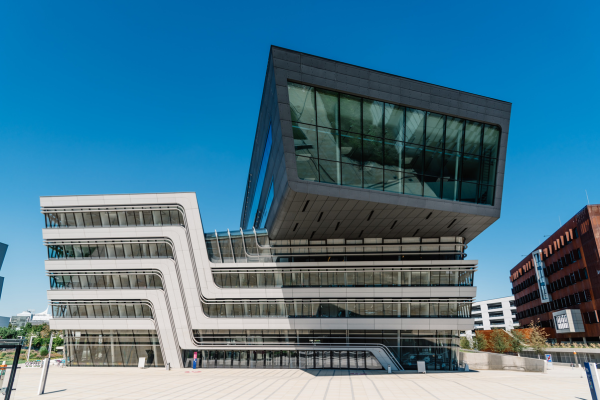
BIM: The Backbone of Modern Construction Management
Imagine building a house where you could see every room, wall, and window before even laying the foundation. That's what BIM, or Building Information Modeling, does for architects and builders today. It's like having a crystal ball for construction, but better, because it's real and it's revolutionizing the way we create buildings.
BIM isn't just about 3D designs. It's a smart process that gives us a digital representation of a building's physical and functional characteristics. This means architects can dive into every detail of the project, from how the sunlight hits the building to how much it's going to cost, all before breaking ground.
With BIM, we're not just drawing plans; we're creating a fully detailed model that carries all the information needed for building, maintaining, and even demolishing a structure. This isn't just handy for architects and engineers; it's a game changer for everyone involved in a project, including owners and contractors.
The best part? BIM is paving the way for more sustainable, efficient, and cost-effective buildings. It's not just about making things easier; it's about making them better, for everyone and the planet.
So, as we look to the future of architecture, BIM stands out as a beacon of innovation, guiding us towards smarter, more conscious construction practices. It's not just changing the game; it's redefining it.
BIM is transforming architectural design from the ground up, literally. Imagine being able to experiment with your building designs like they're Lego blocks. That's what BIM allows architects to do. It's not just about making buildings look good; it's about making them work better.

With BIM, architects can play around with different designs before deciding on the final one. They can see how different materials react to the environment, how changes affect cost, and even predict future maintenance needs. It's like having a sneak peek into the building's future and tweaking it to perfection.
But BIM's impact doesn't stop at just designing better. It's also about building smarter. By simulating real-world conditions, architects can ensure that their buildings are energy-efficient, reducing carbon footprints and saving on energy bills. This is huge, especially today, when sustainability is not just a buzzword but a necessity.
Moreover, BIM fosters collaboration. Architects, engineers, and contractors can all work on the same model, making changes in real time. This teamwork makes the design process more fluid, reducing errors, and saving time and money.
In short, BIM is more than a tool; it's a way of thinking. It encourages architects to consider every aspect of the building process, from conception to demolition. The result? More thoughtful, efficient, and sustainable designs that are as good for the planet as they are for the people who use them. BIM isn't just changing the way we design buildings; it's improving the way we build our future.
When construction kicks off, BIM comes into its own, acting like a supercharged playbook for the whole team. Picture this: every detail of the building, from the depth of the foundation to the color of the bathroom tiles, all stored in a digital model that everyone can see and update in real time. This is how BIM revolutionizes construction management.
It's like having a 3D GPS for building. With BIM, construction managers can see exactly where each piece of the puzzle fits. They can plan and adjust schedules on the fly, ensuring that materials arrive just in time, reducing waste and keeping the site tidy. This precision planning helps in avoiding those all-too-common construction delays and budget blowouts.
But it's not just about sticking to schedules. BIM helps in spotting potential problems before they become real headaches. By simulating the construction process in a virtual environment, BIM allows managers to run through the entire build, step by step, identifying and resolving clashes between different elements of the project. This preemptive problem-solving saves a ton of time and money.
Moreover, BIM facilitates a level of teamwork that was hard to achieve before. Architects, engineers, builders, and even clients can all dive into the model, making sure everyone's on the same page. This collaborative spirit ensures that when decisions are made, they're made with a full understanding of their impact, leading to better outcomes for everyone involved.
In essence, BIM in construction management isn't just a tool; it's a game-changer. It makes construction smarter, smoother, and more connected, paving the way for projects that are delivered on time, within budget, and with fewer surprises.
BIM isn't just a tool for the design and construction phases; it's a companion for a building's entire life. From the sparkle in an architect's eye to the last brick laid—and beyond—BIM is there, making every step smarter and more efficient.
Let's start at the beginning. In the planning stage, BIM is like a crystal ball. It lets architects and builders peer into the future, testing out ideas and spotting issues before they become expensive mistakes. This early insight can shape a project, guiding decisions that save time, money, and resources.
But BIM's magic doesn't fade once construction wraps up. It hands over a digital blueprint—a detailed model of the building that includes everything from the materials used to the layout of electrical wiring. This model is a goldmine for facility managers, helping them keep the building running smoothly. Need to repair a HVAC system? BIM shows you where it is, how to access it, and what you might need to fix it.

And when it's time to renovate or even demolish, BIM is still in the game. The model can help plan the work, ensuring that it's done efficiently and safely. In demolition, BIM can identify materials that can be recycled or reused, supporting sustainability even in the building's end of life.
Through every phase, BIM enhances communication, coordination, and efficiency. It ensures that every decision is informed, every problem is anticipated, and every outcome is optimized. In the world of building and construction, BIM isn't just a phase; it's a lifecycle companion, ensuring that from inception to demolition, every step is taken with insight and intelligence.
BIM's journey into the future is like a superhighway, merging with the lanes of emerging technologies. Picture BIM not just as a standalone tool, but as a hub, seamlessly connecting with innovations like the Internet of Things (IoT), Artificial Intelligence (AI), Virtual Reality (VR), and Augmented Reality (AR). This integration is set to revolutionize architecture, construction, and building management in ways we're just beginning to explore.
Imagine buildings that talk. With IoT, BIM models become living entities, continuously updated with real-time data from sensors throughout the structure. This could mean automated adjustments to lighting and heating for energy efficiency, or real-time alerts about maintenance needs, making buildings smarter and more responsive to their occupants' needs.
Then, there's AI. By integrating BIM with AI, the process of designing, constructing, and managing buildings becomes more intelligent. AI can analyze vast amounts of data from BIM models to predict outcomes, optimize designs for energy efficiency, and even automate tedious tasks, freeing up humans for more creative endeavors.
VR and AR bring a new dimension to BIM. With VR, stakeholders can immerse themselves in the digital twin of a building before it's built, experiencing spaces and identifying potential issues in a way flat blueprints could never allow. AR takes this a step further, overlaying the BIM model onto the real-world construction site, helping workers visualize exactly where each component should go, reducing errors and speeding up construction.
The future of BIM is one of endless possibilities. As it integrates with these technologies, it paves the way for more efficient, sustainable, and user-friendly buildings. The construction site of the future will be a place of precision and imagination, where technology and human creativity combine to create environments that are not only built more efficiently but also live and breathe alongside their inhabitants.
Adopting BIM isn't without its hurdles. One big challenge is the learning curve. For many in the construction industry, moving from traditional methods to a BIM-centric approach is a significant shift. Training and education are key, but they require time and investment.
Then there's the issue of compatibility and standardization. With so many BIM software options available, ensuring that all stakeholders can work seamlessly together is easier said than done. Developing industry-wide standards for BIM data can help, but it's an ongoing process.
Despite these challenges, the path forward is clear. The benefits of BIM—increased efficiency, reduced costs, and better outcomes—are too significant to ignore. As the industry continues to evolve, embracing BIM and overcoming these hurdles will be crucial. The future of construction is digital, and BIM is leading the way. By investing in training, pushing for standardization, and fostering a culture of collaboration and innovation, the industry can fully realize the transformative potential of BIM.
This blog draws upon insights from leading industry sources and academic research, underlining the critical role of Building Information Modeling (BIM) in modern architecture and construction. For a deeper dive, sources such as the "Journal of Building Information Modeling" and the "International Journal of Architectural Research" offer extensive studies and articles on BIM's impact, technological integration, and future directions. Furthermore, organizations like the American Institute of Architects (AIA) and the National Institute of Building Sciences (NIBS) provide valuable resources and guidelines for BIM implementation and standards.
Our credibility stems from meticulous research and consultation with industry experts. By staying at the forefront of technological advancements and industry trends, we strive to provide our readers with information that is not only current but also actionable. For those interested in exploring BIM further, visiting the websites of these institutions and accessing their publications will offer extensive knowledge and insights into the transformative power of BIM in shaping the future of architecture and construction.